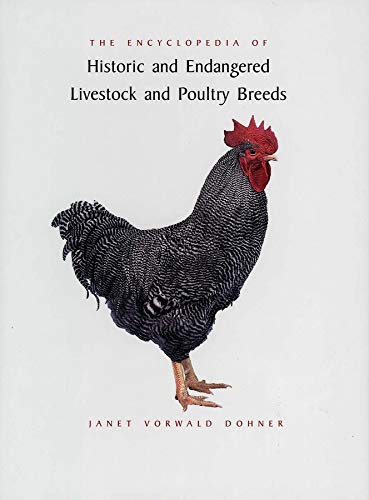Seen a cow lately? Or a pig? How about sheep or chickens? If you live near a major city, it's probably been awhile since you've encountered livestock. But even if you live in the country, miles from the nearest freeway or shopping mall, you're probably seeing less livestock these days.
Farm animals are in decline worldwide. Out of approximately 4,000 breeds of domesticated animals, 1,000 breeds are seriously threatened with extinction. Every week another breed of workhorse, cattle, pig or variety of sheep or poultry follows the passenger pigeon, the blue pike and the wooly mammoth into oblivion.
In hard numbers, there's no shortage of livestock. More domesticated animals are being farmed in less space and with greater returns of meat, milk, eggs and wool than at any time in history. But the number of breeds of domesticated animals is much smaller than it was a century ago. The genetic diversity of farm animals is shrinking, and with it the ability to adapt to new climates, new diseases and new markets.
Go back 15,000 years or so and there were only a handful of domesticated animals and most were found in the river valleys of what is now southern Iraq. Today's pigs are all descendants of a few wild boar, cattle trace their lineage to wild Aurochs, and sheep come from the Asiatic moufflon and a couple other wild ancestors.
From a small number of wild ancestors thousands of different breeds of farm animals were created by farmers on every continent selecting and breeding for traits like hardiness, efficiency, disease resistance and fertility.
It took 10,000 years to develop a great diversity of farm animals suited to various climates and conditions and markets around the world. It has taken less than a century to reduce that diversity by more than half.
The Holstein, for instance, stood out from hundreds of other breeds of cow for its milk production and today almost all our dairy products come from this one breed. Jerseys, Guernseys, and dozens of other breeds that were once productive milkers are now considered rare and unusual, raised primarily by hobbyists and collectors. The same is true of pigs, poultry, sheep and goats. The drive toward intensification and specialization worldwide has resulted in an increased reliance on a small number of breeds to meet the demand for food. Many breeds that once were considered valuable have been committed to the genetic wastebasket.
The highly specialized nature of modern agriculture discourages breed diversity. In an intensively management system it is more efficient to deal with a single productive breed than to mess around with animals of varying degrees of disease resistance or fertility.
Like family farms and rural communities, endangered livestock breeds have no laws to protect them and little political muscle. Their survival depends mainly on appeals to common sense and long-term vision. We can get by without the Belted Galloway, the Cotswold, the Gascon or the Marsh Daisy, but at what cost?
A number of organizations are documenting rare breeds and trying to maintain them, including Rare Breeds International (Ave. Q, National Agricultural Center, Stoneleigh, Kenilworth, Warks, England CV8 2LG), Australian Rare Breeds Reserve (Snig Hall, Gidgegannup, W. Australia 6555), Joywind Farm Rare Breeds Conservancy (Marmora, Ontario, Canada K0K 2MO), American Livestock Breeds Conservancy (Box 477, Pittsboro, NC 27312).


